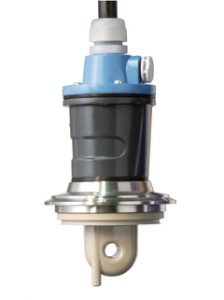Table of Contents
- Introduction
- Understanding Conductivity Sensors
- Applications of Conductivity Sensors
- Factors Affecting Conductivity Measurements
- Benefits of Using MDL: CLS54-ASMS022 Conductivity Sensor
- Installation and Calibration Process
- Maintenance and Troubleshooting
- Future Developments in Conductivity Sensing Technology
- Conclusion
- FAQs
-
Introduction
In today’s technological world, various types of sensors play a crucial role in monitoring and controlling processes in industries. One such essential sensor is the conductivity sensor. This article aims to provide an in-depth understanding of the MDL: CLS54-ASMS022 conductivity sensor by E&H (Endress+Hauser), its applications, installation process, maintenance, and future developments in the field and how techno Control Corporation has been a leading suppliers of innovative engineering products.
-
Understanding Conductivity Sensors
Conductivity sensors are devices designed to measure the electrical conductivity of a solution or substance. They work on the principle that the more ions present in a solution, the higher its conductivity. Conductivity sensors consist of two or more electrodes that come into contact with the solution, creating an electrical circuit. The conductivity is then measured by determining the electrical resistance between the electrodes.
-
Applications of Conductivity Sensors
Conductivity sensors find applications in various industries due to their versatility and accuracy. Some common applications include:
- Water Quality Monitoring
Conductivity sensors are widely used to measure the conductivity of water in environmental monitoring, water treatment plants, and swimming pools. They help in assessing the purity, salinity, and overall quality of water.
- Industrial Process Control
In industrial settings, conductivity sensors play a vital role in process control. They ensure the proper functioning of chemical processes, such as the concentration of solutions, desalination, and cooling tower control and techno Control Corporation has been providing consultancy and procurement services for the industries.
- Food and Beverage Industry
Conductivity sensors are utilized in the food and beverage industry to monitor the concentration of salt, sugar, and other substances. They help in maintaining product consistency and quality.
-
Factors Affecting Conductivity Measurements
Several factors can influence the accuracy of conductivity measurements. These include:
- Temperature
Conductivity is temperature-dependent. Therefore, it is crucial to consider temperature compensation when measuring conductivity to ensure accurate results.
- Electrode Contamination
Contamination of the electrodes can lead to inaccurate measurements. Regular cleaning and maintenance of the electrodes are necessary to maintain measurement reliability.
-
Benefits of Using MDL: CLS54-ASMS022 Conductivity Sensor
The MDL: CLS54-ASMS022 conductivity sensor by E&H offers several advantages over traditional sensors. Some key benefits include:
- High Accuracy: The sensor provides precise and reliable measurements, ensuring accurate process control.
- Robust Design: The sensor is designed to withstand harsh industrial environments, making it suitable for a wide range of applications.
- Easy Installation: The sensor is user-friendly, allowing for hassle-free installation and integration into existing systems.
- Low Maintenance: The MDL: CLS54-ASMS022 conductivity sensor requires minimal maintenance, reducing downtime and costs.
- Versatile Connectivity: The sensor can be seamlessly integrated into various communication protocols and systems.
-
Installation and Calibration Process
Installing and calibrating the MDL: CLS54-ASMS022 conductivity sensor is a straightforward process.
Techno Control Corporation has prepared a guide for successful installation and calibration.
Follow these steps for successful installation:
- Identify the suitable location for the sensor in the process pipeline or tank.
- Ensure proper electrical and mechanical connections.
- Perform the initial calibration based on the provided guidelines.
- Verify the sensor’s performance using a calibration standard solution.
-
Maintenance and Troubleshooting
Regular maintenance ensures the longevity and optimal performance of the MDL: CLS54-ASMS022 conductivity sensor.
Here are some maintenance tips and troubleshooting techniques:
- Clean the sensor and electrodes periodically to prevent contamination.
- Check the cable connections for any signs of wear or damage.
- Calibrate the sensor regularly to maintain accuracy.
If experiencing issues, consult the user manual or techno control corporation for troubleshooting guidance.
-
Future Developments in Conductivity Sensing Technology
As technology advances, conductivity sensing technology is expected to evolve. Techno Control Corporation is an innovative firm specializing in providing professional recommendations and adaptability solutions for future engineering modifications and innovations.
Some potential future developments include:
Enhanced Sensitivity: Future conductivity sensors may offer increased sensitivity for more precise measurements.
Miniaturization: Smaller and more compact sensors may become available, allowing for easier integration into various systems.
Wireless Connectivity: Conductivity sensors may adopt wireless communication protocols, enabling seamless data transfer and remote monitoring.
-
Conclusion
The MDL: CLS54-ASMS022 conductivity sensor by E&H is an indispensable tool for industries that require accurate and reliable conductivity measurements. Its robust design, ease of installation, and low maintenance make it a preferred choice for various applications. With continuous advancements in conductivity sensing technology, the future holds even more exciting possibilities for improved measurement accuracy and convenience.
-
FAQs
Q1: Can the MDL: CLS54-ASMS022 conductivity sensor be used for corrosive substances?
Yes, the MDL: CLS54-ASMS022 conductivity sensor is designed to handle corrosive substances and withstand harsh industrial environments.
Q2: How often should I calibrate the conductivity sensor?
It is recommended to calibrate the sensor periodically or as specified by the manufacturer. The frequency may vary depending on the application and environmental conditions.
Q3: Can the conductivity sensor be used in high-temperature environments?
Yes, the MDL: CLS54-ASMS022 conductivity sensor is suitable for high-temperature applications, provided it is within the specified temperature range.
Q4: Is the MDL: CLS54-ASMS022 conductivity sensor compatible with PLC systems?
Yes, the MDL: CLS54-ASMS022 conductivity sensor can be easily integrated into various PLC (Programmable Logic Controller) systems using standard communication protocols.

